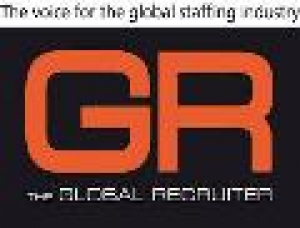By now, we’ve all heard our industry’s excitement about Big Data. It’s the future, some people say. It’s going to revolutionise recruitment. Sure, that sounds wonderful. But at this stage, the excitement – while justified – is bordering on hype. I don’t aim to crush dreams or crash the party, but I think it’s obvious that companies haven’t yet figured out how to monetise Big Data. The reason is simple: Big Data isn’t clearly defined, nor is it arranged in a digestible format. Very few recruiters know what specific data sets they are hunting for and for what purpose.
That’s not to say we don’t have any data to work with – there’s plenty, of course. The Internet is overflowing with competitive intelligence. We have the everyday sources we all know and love: company websites, LinkedIn, and the bottomless reservoir of job boards. Still, most of this valuable information is unstructured and scattered across disparate locations. Unless you hire a dedicated research team to hunt for trends and linkages, there is no way to effectively harness the tidal waves of information.
So let’s do a reality check and come back full circle to where this industry started. To where, you ask? To those tried and true CVs – the essential tool of our trade ever since Leonardo da Vinci created the first résumé way back in 1482.
It seems the Internet hasn’t killed off the CV, despite a few wild claims to the contrary. Employers and recruiters are still asking for candidate CVs – that’s unlikely to change any time soon. And it’s undeniably true that CVs are treasure troves of actionable information. Unlike the mountains of Big Data floating ‘out there’ in some intangible and ever-expanding digital universe, the information on a CV is at our fingertips right now.
Here are a few tips on what can be gained from the river of CVs flowing toward you – not only how to filter them against job descriptions, but also how to use CV data to run your business better and reduce the costs of making a new hire. A lot of the data you need is contained in those perfectly (or not so perfectly!) crafted CVs – and the best news of all is that we now have the technology to extract it for you. That’s right: the whole process can be automated.
So, what’s the first step? Well, you should pull all of the relevant factual data from the CVs you've collected and input those invaluable factoids into your database. How do you do that? Do you need to do it manually? Mercifully, you don’t. Today there are résumé parsing software solutions that will do all of the heavy lifting for you. These solutions are relatively low cost and they deliver levels of accuracy and detail at the very least on par with those of a human administrator, regardless of the language or formatting style on the individual CV.
Second, recruiters should routinely track the source of each candidate in order to measure the success of their hiring campaigns. We all know heaps of money is spent to attract the right talent – be it through job advertising, agencies or headhunting. But again, these efforts are usually scattered. Recruiters often can’t tell where the candidates they hired or placed came from – and that’s a big waste!
What do I mean? Well, on a very basic level, if you are making X number of placements from advertising on a certain job board, how does that success rate compare with the other job boards that you use? Knowing this simple fact will obviously help you configure budget allocations for future marketing campaigns.
Digging deeper still, you can start measuring trends in the types of candidates your campaigns attract. Are they seasoned executives? Mid-career hires? Graduates just starting out? Armed with knowledge of the job board’s effectiveness, you can better shape your hiring campaign strategy.
Make sense? Now, let’s step back and consider the volume of competitive intelligence contained in an average CV. For starters, each CV illustrates, in detailed terms, the growth strategies of a candidate’s previous employers. You know, when the candidate writes something to the effect of: “Managed strategic growth project XYZ, and doubled China revenue to US$200 million in 2012.” And then there are those valuable morsels of data about projects in the pipeline: “I led a committee on India market analysis and our company’s India growth strategy.” It goes without saying that such data should be extracted from each CV, fed into your CRM and used for predictive analytics and/or lead-generation purposes.
There’s also an abundance of ‘intelligence’ you can gather about skill sets and qualification trends. To be competitive, candidates must use their CVs to advertise their key strengths, and also highlight their professional and academic qualifications. If you consistently extract, normalise and store this data on your database, you will be able to see the movement of competencies in the market, and their respective supply and demand trends. Such data, when properly organised and combined, will create an oasis of knowledge to drink from as you plan your company’s next big project or business line.
Here’s another way for recruiters to think of a CV: You are selling a product – a job – and each candidate is your potential customer. The candidate’s CV tells you who they are, where they are, and what they want. Why can’t you use this information to advertise highly relevant opportunities to the candidate when they apply for a job via your website? You know, just like Google does with ads. Ever notice how restaurant ads miraculously appear when you’re reading a friend’s email about a great meal? To do this effectively and with the necessary degree of subtlety, you must have structured and normalised competencies data in your database. As I said above, the beauty of this is that the task no longer requires hours of data entry and admin — it’s 2013 and you can automate this process with parsing software and display matching jobs to your applicant in real time during the registration process! This will dramatically increase the effectiveness of your job-filling efforts.
Keep in mind that CVs – similar to all types of data – have a shelf life. People move and change industries, companies launch projects and abandon them and go in and out of business. That means CV data dates quickly and sours like an everyday carton of milk. It’s a familiar picture for every recruiter – peering into the database and realising most of the candidate information is old and out of date. What can be done?
First, you can dust off and refresh your legacy database and commit to making it an ever-changing, ever-evolving organism. How do you do that? You mailshot all of your existing candidates and request an updated CV. Then you can use a good automated parsing system to auto-update the old records as the updates start coming in.
Don’t worry about those who won’t respond to the mailshot. You can safely archive or delete them, depending on your local legislation and availability of space on your servers. From then on, send regular bi-annual ‘courtesy’ mailshots to your candidates – a friendly email enquiring about their current situation will not only sift out those people who choose to opt out, but will also demonstrate that your company values their interest in you as a potential employer.
At Daxtra, we’ve delivered a number of projects like this for our clients. We’ve breathed new life into their candidate databases and helped them pull business-enhancing information from the data at their fingertips. And get this: our findings reveal that in staffing agencies and contingency recruitment businesses the level of duplication among incoming CVs averages 50-60 percent. That means more than half of all incoming CVs are from candidates who already applied to you in the past.
That’s why having an automated CV parsing system in place is a must in this era of information overload. The benefits are obvious. You keep your administration costs down, while you convert unstructured CV data into actionable business intelligence. A good parsing solution de-duplicates repeat candidate files and refreshes an old entry with new information, which means your database will, almost effortlessly, be kept up to date.
With the help of a parsing technology, you can now extract value from every morsel of data that candidates give you. Parsing reduces your workload and costs, while it also gives you invaluable data and real time actionable insights: what could be better? That’s why the CV is still king.










